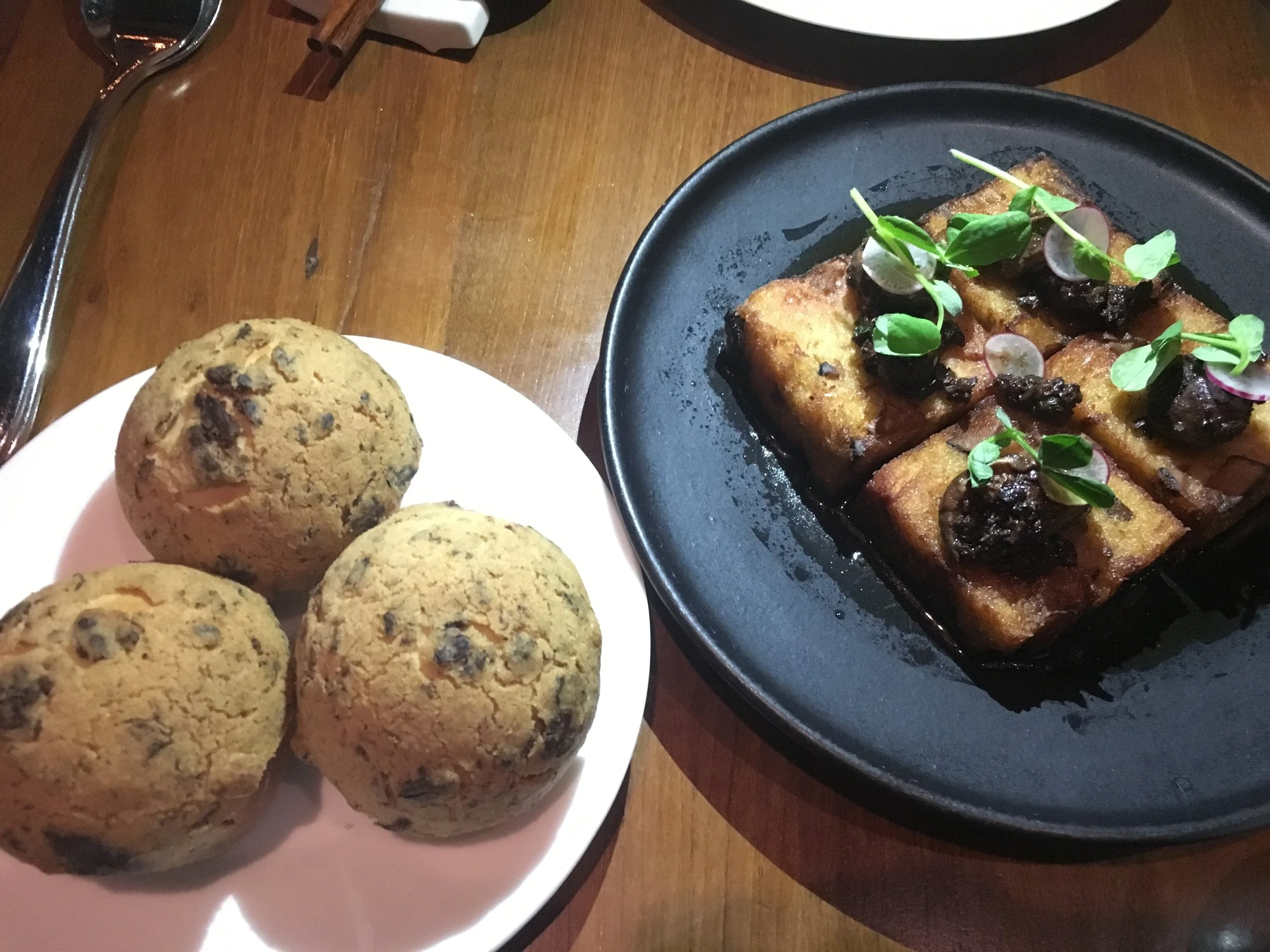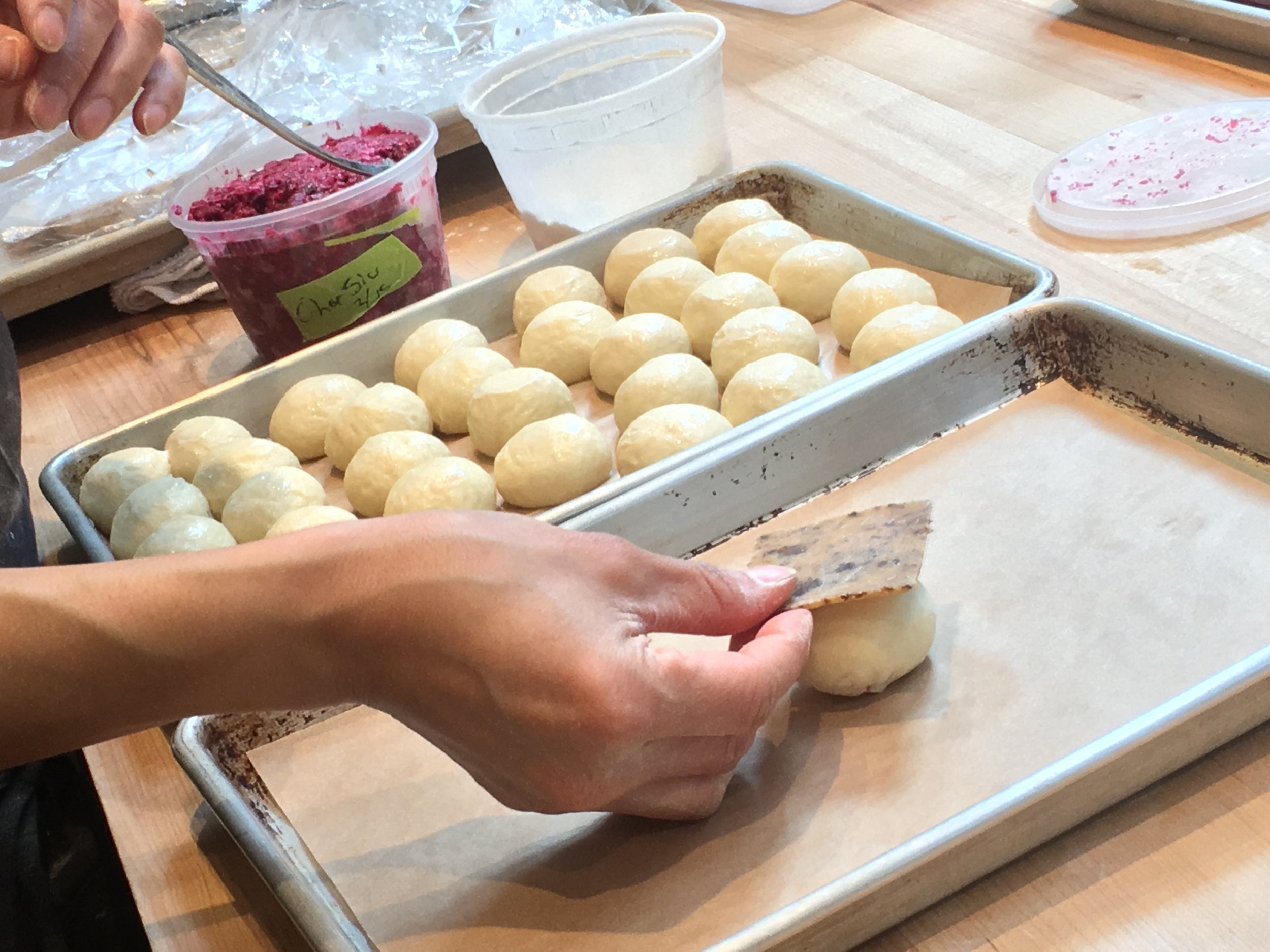Inside Mister Jiu's Buns

BY TAMARA PALMER
Brandon Jew grew up in San Francisco with memories of snacking around Chinatown with his family and is now making the most distinctive fine food in the area. His restaurant Mister Jiu’s — named for the correct spelling of his family name, which was changed when his grandparents immigrated here — has earned a Michelin star in its first year of operation.
Mister Jiu’s beautiful and modernized decor breathes life into a banquet space that has only been home to three restaurants since the late 1800s, starting with the awesomely named Hang Far Low. The last tenant, Four Seas, operated for more than 50 years. Both have given Jew strong examples of longevity, but what gives him a true shot at sticking around is his commitment to changing the conversation about American Chinese food as being something that’s cheap and unhealthy. It doesn’t help that there are more than 400 Chinese restaurants in San Francisco that are all essentially serving the same thing.
“Everyone’s buying the same fermented black beans, the same oyster sauce, that’s why it all tastes the same,” Jew says. “And when I look at the ingredients, it’s all full of crap.”
He knew he had to differentiate his food by making all the pantry staples and utilizing the sumptuous bounty of local California produce to really give his menu a modern sense of place. In other words, Jew jokes, “We like to make things as complicated as we can.”
A dish that exemplifies this outlook and process is the Dutch crunch BBQ pork bun, which rejects the typical conventions of a char siu bao for something altogether more natural and flavorful. Char siu often has a fake, flaming red hue due to artificial additives. Jew brainstormed and experimented with organic foods that could achieve a vibrant color (if not the exact same shade) and has settled on an ingenious sauce made with beets and tofu that has been fermented in red rice.
Every day, the kitchen hands off the roasted pork belly and sauce for the buns to pastry chef Melissa Chou and pastry cook Kelly Teramoto, who produce enough buns to fulfill about 35 three-piece orders. It’s only one of many daily duties, but it recently increased significantly once the buns, which were previously only on the bar menu, became available in the dining room.
“It’s been really interesting using our pastry backgrounds for this kind of stuff, it’s been really fun,” says Chou. “Chinese food has a lot of crossover as far as these pastry skills are concerned.”
Like many Bay Area natives who grew up eating Dutch crunch bread with their deli sandwiches in high school, Jew didn’t realize how local of an item it is until we mentioned it to him. In fact, the Dutch crunch that tops his pork buns isn’t made with sesame oil and rice flour, as it is on the bread, but with a sheet made out of housemade pork floss, butter, brown sugar and flour streusel that Chou mixes, rolls out and gives to Teramoto to place on top of the buns she hand forms from their dough. It's a milk bread that's often mistaken by customers to be brioche because of the fluffy texture that’s made without eggs.
“I didn't really know how to describe the topping of what we were doing other than, it's kind of like Dutch crunch,” Jew admits. “So, I think in hindsight it worked out because the more and more we go down the path of trying to figure out where we mix American things, Bay Area things, the culture of the Bay Area and American culture into the Chinese aesthetic and Chinese tradition is a balance I'm still trying to figure out. I think every dish is going to have a range of this one is maybe more American or [this one is] more Chinese. But I’m trying to find that proximity where all the dishes can land in this feeling like what we are producing is unique to this area. To me what I'm striving towards is a real definition and distinction of San Francisco Chinese food and the food that I want to express can only be represented by the ingredients and the culture of the Bay Area. That's the path that we're on in the kitchen is really trying to find that.
“I want to be able to represent the season and the farmers of this area and I think if I can get them to grow things for me, I think eventually that will hopefully stem another boost of inspiration and new dishes for our restaurant. I want the menu to reflect the farmers market but it has to be a combination of Chinese ingredients and Chinese pantry. Being able to support farmers, being able to support a bigger conversation about how things should be grown and how we should take care of the earth, all those things matter to me so being able to support those people is part of this restaurant as well and what inspires me.”


